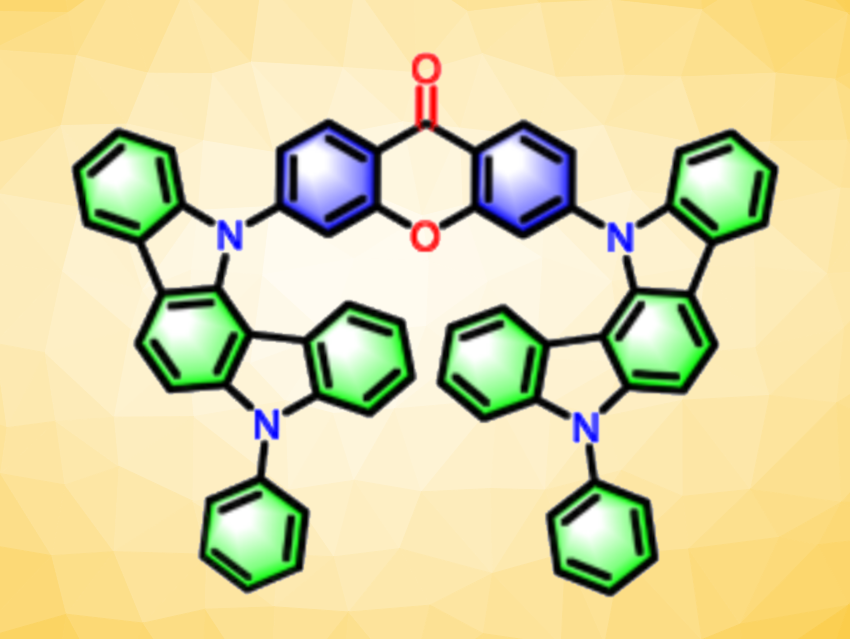Organic light-emitting diodes (OLEDs) are used in displays and lights. They can have useful properties such as flexibility, low energy usage, high color quality, and fast response times. The luminescent materials used can determine the OLEDs’ performance. Purely organic luminescent materials with room-temperature phosphorescence (RTP) could lower the costs and environmental impact of OLEDs further. Although there are purely organic RTP materials, so far, they rarely provide satisfactory electroluminescence (EL) performance when used in OLEDs.
Zujin Zhao, South China University of Technology, Guangzhou, China, and colleagues have developed a robust purely organic RTP molecule, 3,6-bis(5-phenylindolo[3,2-a]carbazol-12(5H)-yl)-xanthen-9-one (3,2-PIC-XT, pictured). The team synthesized 3,2-PIC-XT via a Buchwald-Hartwig coupling of xanthone (XT) and 5-phenyl-5,12-dihydroindolo[3,2-a]carbazole (3,2-PIC), obtaining the desired product in 90 % yield.
A neat film of 3,2-PIC-XT showed strong green RTP with a very short lifetime (2.9 μs) and a high photoluminescence quantum yield (72 %). The team built non-doped multilayer OLEDs using thin neat films of 3,2-PIC-XT, which showed a high external quantum efficiency (EQE) of 24.91 %. Non-doped OLEDs using thick neat films of 3,2-PICXT were also created. They retain an excellent EQE of 17.79 % with an enhanced operational lifetime. The team also realized high-performance non-doped top-emitting and tandem OLEDs, providing EQEs of 24.53 % and 42.50 %, respectively. According to the researchers, the devices based on 3,2-PIC-XT neat films are the best non-doped OLEDs using purely organic RTP materials so far.
- Purely Organic Room‐Temperature Phosphorescence Molecule for High‐Performance Non‐Doped Organic Light‐Emitting Diodes,
Xiaoluo Peng, Peng Zou, Jiajie Zeng, Xing Wu, Dian Xie, Yan Fu, Dezhi Yang, Dongge Ma, Ben Zhong Tang, Zujin Zhao,
Angew. Chem. Int. Ed. 2024.
https://doi.org/10.1002/anie.202405418



